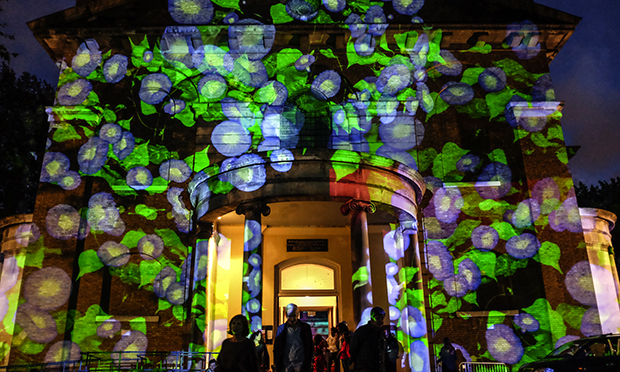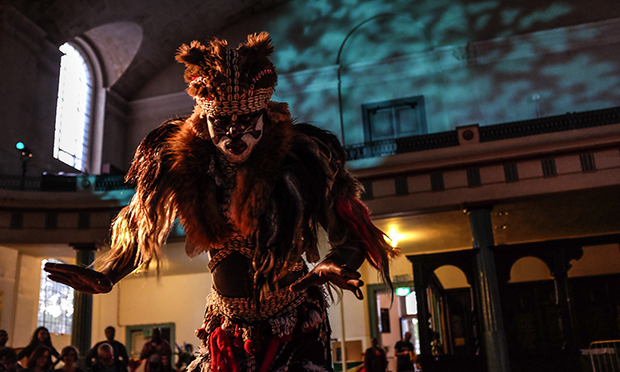Turning the spotlight on Hackney's botanical and textile history
Hackney’s ‘hidden history’ as a centre for botany and textiles was celebrated on Saturday 12 September with a spectacular light show and app-based trail of the borough’s green-fingered past.
Centering on St John at Hackney church, the Electric Bloom project, led by creative studio SDNA and supported by Hackney Council, saw residents venture in the dark around artworks located at local heritage sites, while listening to audio stories reflecting on Hackney’s past, present and future.
Illustrations of palm leaves designed by Anna Glover formed a permanent light projection on Churchwell Path, while seventeenth century-style intaglio etches by Bryan Poole were animated and projected onto Morning Lane.
The evening was the culmination of six months of workshops in which residents and artists explored Hackney’s forgotten status as home to London’s textile industry and the largest botanical hothouse in the world.
During the eighteenth and nineteenth century the Loddiges family set up and ran a specialist plant nursery in Hackney just north of St Thomas’s Square off Mare Street.
The nursery introduced into European gardens several species of exotic trees, plants, ferns and shrubs (including rhubarb, the Common Mauve Rhododendron and the Lotus), and the hothouse created a tropical environment where exotic species could thrive in the middle of Hackney Central.
Although the nursery closed in the 1850s, the coming century saw Hackney’s textile roots take hold. By 1900 Hackney was home to hundreds of factories and workshops that employed over 15,000 people.


